
Birth of endangered rhino calf caught on camera at Chester Zoo
The birth of a rare rhino calf at Chester Zoo was caught on camera. A zookeeper captured rhino Zuri giving birth to an eastern black rhino on Sunday, 12 November. “So far, the pair have been inseparable and the little one is feeding regularly and already gaining in size and weight,” says Rhino team manager Emma Evison. The birth will help in preserving an endangered species. Fewer than 600 of the species are left across the African wild and are listed as critically endangered by the International Union for the Conservation of Nature (IUCN). Read More Wayne Rooney ‘couldn’t be bothered’ to meet rap icon at Glastonbury, Coleen reveals How to use your Apple Watch to calculate perfect restaurant tip Martin Lewis issues urgent warning to unmarried couples living together
2023-11-22 19:48

India Resumes Visas for Canadian Citizens as Tensions Ease
India has restored online visa services to Canadian nationals in a sign that relations are improving after the
2023-11-22 19:00

US Airlines Keep Adding Seats They Can’t Get Anyone to Fill
A record 30 million people are expected to catch a flight over the Thanksgiving holiday, but airlines that
2023-11-22 18:50

Iceland Holds Rates as Volcanic Eruption Risk Clouds Outlook
Iceland’s central bank kept borrowing costs unchanged at a 14-year high for a second meeting as the risk
2023-11-22 17:55
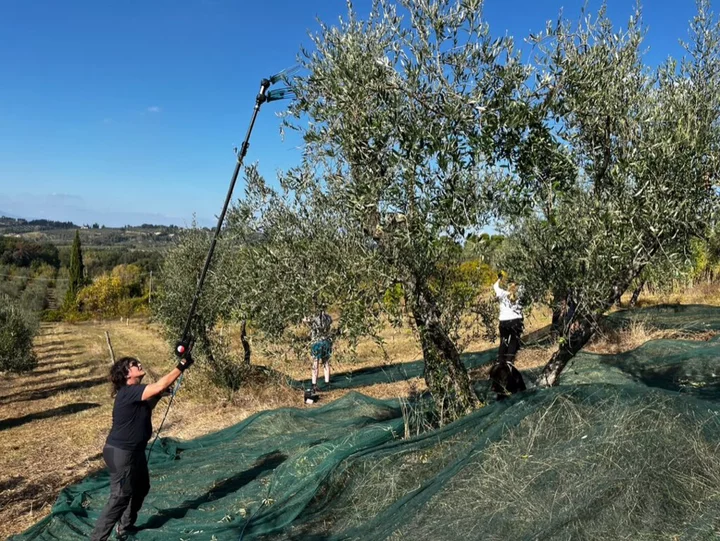
Olive Oil Producers Turn to Tourists to Combat Soaring Costs, Extreme Weather
Maria Angela Macchia jams a 10-foot pole topped with an electric comb into the upper reaches of a
2023-11-22 17:45
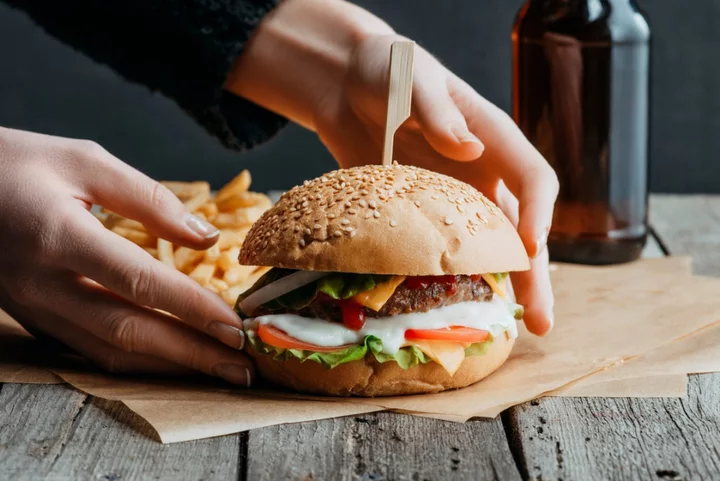
Mayo slander doesn’t make you a foodie – it makes you boring
As if to prove a point, I am sitting in front of my computer, typing with one hand and dipping chicken nuggets into mayonnaise with the other. Admittedly, it’s not even the good stuff – it’s M&S-branded mayonnaise, which is fine but certainly no substitute for a delicious Hellman’s. But to me, all mayonnaise, even not-very-good-mayonnaise, is the good stuff. This might come as a surprise. As a food writer, I’m often expected to rise above the simple condiments. The circles I run in, usually full of food lovers and taste-makers, tend to decry mayonnaise, which pains me. “God, I hate mayo,” some of them proclaim. This happened to me not long ago while getting chips at Wetherspoons, as if we were even eating at some sort of paragon of British cuisine. “Mayonnaise is boring!” they shout. “It’s got no flavour! It looks gross!” I cringe because I was about to help myself to the squeezy bottle. I’ve often felt embarrassed by my love for this apparently bland condiment. When the people around me make announcements about the awfulness of mayonnaise, I wonder if my reputation as a gastronome will be tarnished by the sizeable dollop I like to add to the side of my plate. But I’ve noticed a pattern of late, and it’s time to address it: the people who shout obnoxiously about hating mayonnaise are usually white people who are self-described “foodies”, which is perhaps one of the cringiest words of the 21st century. And I’ve had it. I think it’s self-loathing, really. The same white people who decry mayonnaise see themselves in its milky complexion and feel the need to prove that they are different – exotic, even. Maybe it’s even a way of distancing themselves from the proverbial sins of their fathers. But mayo slander won’t give you a blank slate to reinvent yourself. In fact, it’s been unfairly vilified as plain and dull for too long. It’s one of the UK’s favourite condiments – second only to ketchup – for good reason, and has far more potential than we give it credit for. How do I love thee, mayonnaise? Let me count the ways. Firstly, the way it’s made is pure magic. Eggs? Oil? White vinegar? Lemon? As they are, they don’t really make any sense. But blending them somehow creates a smooth, thick, creamy emulsion. Who on earth discovered this? There are numerous legends about how mayonnaise was first invented; some food historians say it was the French, others point to the Spanish. The sauce can be traced back to 1756, and has gone through many iterations before arriving as the eggy, almost jelly-like substance we know today. The other thing I love about mayonnaise is how versatile it is. You can mix it with just about anything – this is something Heinz does with abandon, selling varieties like Mayomust (mayo and mustard) and Mayocue (mayo and barbecue sauce). I draw the line at some of the brand’s more Frankenstein-esque creations – monstrosities such as Creme Egg mayo and hot cross bun mayo. Some things are better left alone. But mayonnaise mixed with other savoury condiments is revelatory, one of my favourites being sriracha mayo. I would highly recommend making your own mixes, as this lets you decide on a ratio that works for you and means you won’t have to stoop so low as to buy anything labelled “Mayoracha”. Mayonnaise also has far more uses than just dipping. You could mix it with ketchup to make a thousand island dressing for salad (although maybe don’t check any calorie counts if you do this… I certainly don’t). One of the best tips I’ve ever been given is to spread a thin layer of mayonnaise instead of butter over the outside of your cheese toasties before grilling them – the fat in the mayonnaise and its uber-spreadable texture will help you achieve an even browning all over the bread. It has non-food uses, too. You can use mayonnaise, for example, to marinade chicken, which yields tender, juicy meat with loads of flavour. Finally, trying different types of mayonnaise from other countries has been quite an adventure for me. Japanese mayonnaise – my utmost favourite – is tangier due to the use of rice vinegar, as well as more unctuous in texture than regular mayonnaise. I squeeze squiggles of it over scrambled eggs, freshly steamed rice, fried chicken, anything. Dutch mayonnaise is richer and more flavourful, which makes dipping chips into it feel quite luxurious. While I have yet to try Russian mayonnaise, I imagine it is just wonderful, considering Russia is the only market in Europe that sells more mayonnaise than ketchup. My love for mayonnaise knows no bounds. Well, there are some bounds; I wouldn’t choose to emulate Kingsman star Taron Egerton, who once told the Off Menu podcast he spreads mayonnaise on his pizza like butter on a slice of bread. That’s taking things a bit too far. And I won’t touch any sweet mayonnaise atrocities. But I urge anyone who’s ever uttered the words “I hate mayonnaise” to give it another chance. Especially if you’re white. Reclaim your condiment! As for me, I’m done with being embarrassed about loving mayo. In fact, I’m off to buy more. Read More Best wines to pair with Thanksgiving dinner Three easy cranberry sauce recipes to try this Thanksgiving Vegetarian and vegan alternatives to classic Thanksgiving recipes
2023-11-22 14:53

Singapore’s GDP Expansion Beats, Sees 2024 Growth of 1%-3%
Singapore’s economy fared better than initially thought in the third quarter as the government forecasts that growth may
2023-11-22 10:55

Petrobras Faces New Calls to Cut Jet Fuel Prices
Jet fuel prices are the latest source of pressure for Petroleo Brasileiro SA as dissatisfaction with the Brazilian
2023-11-21 23:54
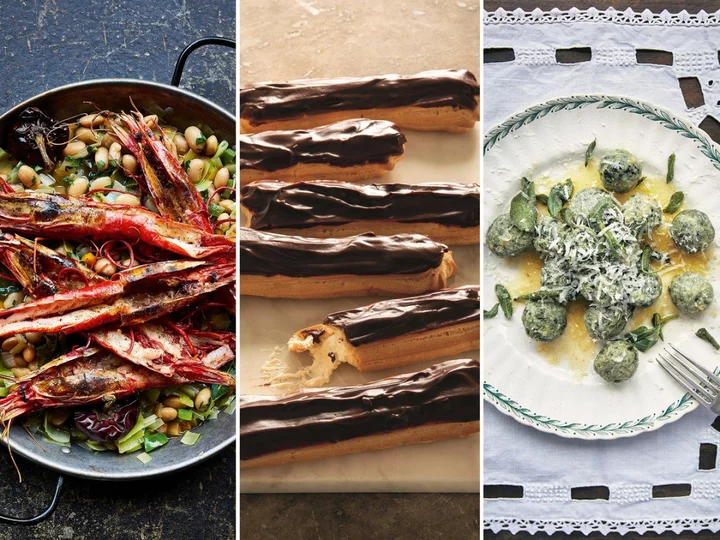
Three new cookbooks worth buying, from James Martin to the Hairy Bikers
This is the best time of year to discover new recipes. As the days get shorter and colder, a glossy new cookbook – and all the food-related inspiration that comes with it – can be just the thing you need. And there are plenty of new releases to sink your teeth into – whether you want to transport yourself to a sunnier country, settle down with some comfort food – or even get a head start on Christmas shopping. Some of the biggest names in food – including chef and former Saturday Kitchen presenter James Martin, BBC stalwarts the Hairy Bikers, and cult restaurateur Russell Norman – have new cookbooks out – and this is what you can expect from each of them. 1. ‘James Martin’s Spanish Adventure’ by James Martin If you were captivated by James Martin’s 20-part ITV series taking a culinary tour around Spain – from the Michelin-starred restaurants of San Sebastian to the local markets of Santiago de Compostela – you’ll want to pick up the accompanying cookbook. One of Martin’s favourite areas in the country is Toledo, “a special ancient city right in the middle of Spain”, he notes. “It’s famous for great produce including game, saffron, honey, olive oil, garlic and the list goes on.” Yorkshire-born Martin says he first fell in love with Spanish food when he came to London as a young chef, and wanted to dedicate this book to the cuisine because he “wanted people to know about the people, the fantastic variety of landscapes, and the spectacular produce available”, he says. “They have the best markets in Europe and the range of ingredients is fabulous – the seafood, the meat, the vegetables and the fruit.” In the cookbook, Martin highlights that Spanish cuisine is far more than just paella and sangria. There are plenty of recipes for traditional dishes – including tapas bites, croquetas, empanadas, Seville pork with patatas bravas and burnt Basque cheesecake – as well as classic Spanish ingredients (such as chorizo, olives and plenty of seafood). While Spain is predominantly known for meat and fish, Martin also shows some of the beautiful ways the country uses vegetables too – such as a dish for deep-fried aubergines drizzled with honey and served with a tomato sauce, and salt-baked celeriac with new potatoes and salsa. Valencia beans and red prawns “Located on the east coast, the 2,000-year-old city of Valencia boasts wide sandy beaches, striking architecture, a buzzing food scene and culture,” says Martin. “It has its own language (a dialect of Catalan) and unique cuisine, with a focus on rice, seafood and meat. This dish showcases red prawns on a bed of white beans and vegetables.” Serves: 2 Ingredients: 75ml olive oil, plus extra for drizzling 2 garlic cloves, chopped 1 onion, diced ¼ leek, diced ½ carrot, peeled and diced ¼ green pepper, cored, deseeded and diced 3 bay leaves 2 whole smoked chilli peppers (or a pinch of chilli flakes) 300g cooked butter beans Splash of white wine Small bunch of flat-leaf parsley, chopped 8 red prawns, split lengthways Sea salt Method: 1. If you want to use a BBQ, heat a BBQ until hot and the coals are white. 2. Heat a medium paella pan and, when hot, add the oil, then add the garlic, all the vegetables, the bay leaves and the smoked peppers. Cook for two to three minutes, then stir in the beans, 50 millilitres of water and the wine and cook for three to four minutes. Season with salt and finish with the parsley. 3. Meanwhile, pop the prawns onto the BBQ, drizzle with oil and season with salt, then cook for two to three minutes until charred, turning once or twice. Alternatively, grill on high for three to four minutes. 4. To serve, remove the smoked peppers (if using) from the beans and then pile the prawns on top of the beans and drizzle with extra olive oil if desired. ‘James Martin’s Spanish Adventure’ by James Martin (Quadrille, £27) 2. ‘The Hairy Bikers’ Ultimate Comfort Food’ by Si King and Dave Myers It’s hard to believe Dave Myers and Si King – otherwise known as the Hairy Bikers – have been on our screens for nearly two decades, with their first BBC show airing in 2004. They’ve written plenty of cookbooks over the years – dedicated to everything from Mediterranean food to curries – and their latest is all about comfort food. In the introduction, the duo think back to what comfort food meant to them growing up – for Myers, it’s a classic chip butty, and King picks out his mother’s curries and casseroles. British classics like these permeate the book – including beef and barley stew, sausage rolls and lemon drizzle cake – but there’s a definite international flavour, with dishes inspired by Myers and King’s travels all over the world. Think soba noodles with miso mushrooms, Szechuan lamb bao buns, chipotle prawn tacos and more. While comfort food might make you think of heavy, rich dishes you want to curl up in the winter with – and those recipes are represented – there’s also a wider picture of ‘comfort’ and what it means throughout the year. Lighter recipes such as the teriyaki chicken salad and Spanish-style roasted vegetables with halloumi will bring just as much joy in the summertime. Chocolate eclairs “Possibly everyone’s top teatime pleasure, eclairs are a bit of work, but are so worth it,” say Myers and King. “Just picture yourself biting into that beautiful choux pastry filled with cream and spread with chocolate.” Makes: about 8-12 Ingredients: For the choux pastry: 115g plain flour 100g butter 2 tsp caster sugar 1 tsp vanilla extract Pinch of salt 3 eggs, well beaten 1 tbsp icing sugar For the filling: 300ml double cream 1 tbsp icing sugar ½ tsp vanilla extract For the chocolate glaze: 100g dark chocolate (or 50g dark chocolate and 50g milk chocolate) 50g whipping cream 50g butter 25g golden syrup Method: 1. Preheat the oven to 180C/fan 160C/gas 4 and line two baking trays with baking parchment. Sift the flour on to another piece of baking parchment. 2. Put the butter, sugar, and vanilla extract in a pan with 225 millilitres of water and a generous pinch of salt. Heat gently until the butter has melted and the sugar has dissolved, then turn up the heat until the mixture is boiling. Remove the pan from the heat. 3. Pull up the sides of the baking parchment and slide the flour into the butter and sugar mixture. Stir the flour into the wet ingredients to form a thick paste which should come away from the sides of the pan in one solid mass. Put the pan back over a gentle heat and continue stirring with a wooden spoon for two or three minutes, until the mixture is slightly steaming and leaves a floury residue on the base of the pan. 4. Leave to cool for a couple of minutes, then beat for a couple of minutes more. You can then transfer the dough to a stand mixer or use electric beaters if you prefer. You will see steam escape from the dough at this point. Keep beating until the steam has subsided. 5. Gradually work in the eggs, just a couple of tablespoons at a time, until you have a thick glossy dough – it needs to be quite stiff and firm enough for you to draw your finger through it without the sides falling back in. The dough initially breaks up a lot, but eventually it will come together again. 6. Fit a large star or plain round nozzle into a piping bag and scoop the dough into the bag. If you don’t have a nozzle, simply snip off the end of the bag off – the hole should be about 2.5cm wide. 7. Pipe tiny amounts of the dough under the corners of the baking parchment on the trays to keep the parchment in place. For large eclairs, pipe eight lines of dough, as evenly as possible, on to the baking trays, making each one about 15cm long. To make sure they don’t spread to an oval shape, pipe them slightly wider at each end. To make slightly smaller eclairs, pipe 12 lines of about 10cm long. Wet your fingers and smooth out the ends of the eclairs if peaks have formed. If you haven’t used a star nozzle, run a fork along the length of each one. 8. Dust the eclairs with the icing sugar – this will help them darken and crisp up in the oven. Bake for 25 minutes by which time they should have formed a crust. Use a skewer to poke holes in each end of the eclairs so steam can escape from their centres, then continue to bake for another eight to 10 minutes. Turn the oven off and leave the door ajar. Leave the eclairs in the oven for about half an hour – this will help make sure they are crisp all the way through. 9. To make the filling, whip the cream until it is stiff, then fold in the icing sugar and vanilla extract. Chill for half an hour. 10. For the glaze, put the chocolate, cream, butter and golden syrup into a bowl over a saucepan of simmering water. Melt together gently to make a fairly thin ganache. 11. To fill the eclairs, cut three holes in the base of each one. Fill a piping bag with the cream and pipe it into the holes. Squeeze the eclairs lightly – they should feel nicely full. Dip each filled eclair in the chocolate glaze – this gives a much better coverage than trying to spread it – then leave them in the fridge to set. These are best eaten on the same day they are made as the pastry will eventually soften, but they will keep for up to 48 hours. ‘The Hairy Bikers: Ultimate Comfort Food’ by Si King and Dave Myers (Seven Dials, £25) 3. ‘Brutto’ by Russell Norman Russell Norman’s debut cookbook, Polpo, won the Inaugural Waterstones Book of the Year back in 2012, and anything the London restaurateur has done since has always been hotly anticipated. For his latest cookbook, Norman has turned his sights on Florence. Named after one of his London restaurants, “brutto” is the Italian word for ugly, and references the Italian expression, “brutto ma buono” – ugly but good. Tuscan cuisine is known for meat, offal, game and beans, Norman explains in the introduction – and these are all represented in the cookbook, albeit with a few more veggie options than you might seen in a traditional Florentine kitchen. You’ll learn a lot about food in Florence from Brutto – such as the city’s passion for wine bars, where antipasti such as coccoli (fried dough balls served with prosciutto and soft cheese) and deep-fried courgette flowers are served. Some of the recipes are Italian classics you’ll know about – such as tagliatelle with ragu and asparagus risotto – and others are more unusual, deeper dives into Italian cuisine – think Florentine-style fried chicken or an oven-baked spinach dish cooked with eggs, cream, Parmesan and a dash of nutmeg. Tuscan food is largely known as peasant food – meaning it’s relatively cheap and easy to make, while still being packed full of flavour. Spinach and ricotta dumplings “Gnudi translates as ‘naked’, as these little dumplings are the most nude and simple form of homemade pasta you can make,” says Norman. “The combination of spinach and ricotta is a very traditional marriage and appears in much of the pasta of the region, in ravioli and crespelle for example. It’s a very satisfying process, and easy enough for children to help with in the kitchen if you want to encourage an early interest in Italian cooking for little chefs.” Serves: 4 Ingredients: 500g baby spinach leaves, washed 50g ‘00’ flour 250g ricotta 1 large free-range egg, beaten 150g grated parmesan Flaky sea salt Black pepper ½ tsp freshly grated nutmeg 250g semolina 100g butter A large handful of sage leaves Method: 1. Steam the spinach for three minutes over a large pan of boiling water. Thoroughly drain and squeeze to remove the excess water, then chop the leaves finely. Set aside. 2. Mix the flour with the ricotta in a large bowl until it resembles lumpy breadcrumbs. Stir in the egg and two-thirds of the Parmesan. Add a pinch of salt, a twist of black pepper, the nutmeg and then add the spinach. Combine thoroughly with a wooden spoon or with your hands. 3. Put half the semolina into a bowl and shake the rest on to a baking sheet or a tray. Take small lumps of the flour, egg and spinach mixture and form them into small balls by rolling them between your palms, to the size of large olives. Turn each ball through the bowl of semolina, then place on the tray you’ve prepared with the rest of the semolina. When finished, you should have 24–30 little balls. 4. Fill a very large pan with water and bring to a rolling boil. Place the gnudi in the boiling water as quickly as possible, bringing it back to the boil on the highest heat, and continue to simmer for about three minutes. 5. Meanwhile, in a small saucepan over a medium heat, melt the butter and add the sage leaves. When it bubbles, reduce to a very low heat. This should take no more than two minutes, while the gnudi are cooking. 6. The gnudi will float to the surface when they are ready. Turn off the heat, remove them with a slotted spoon and drain the excess water on kitchen paper. Place on four warmed plates, pour the butter and sage over the top, then evenly distribute the remaining Parmesan. Add a flourish of black pepper. ‘Brutto’ by Russell Norman (Ebury Press, £32) Read More From a £22 bag of pasta to £28 sandwich – why do they cost so much? How to host a dinner party for under £2 per portion Pearly Cow, Margate, restaurant review: Go for the steak, but stay for the potatoes Three authentic Thai recipes to try at home What does Saturday Kitchen’s Matt Tebbutt cook at home? Three recipes that prove traditional Irish food is better than you think
2023-11-21 14:47
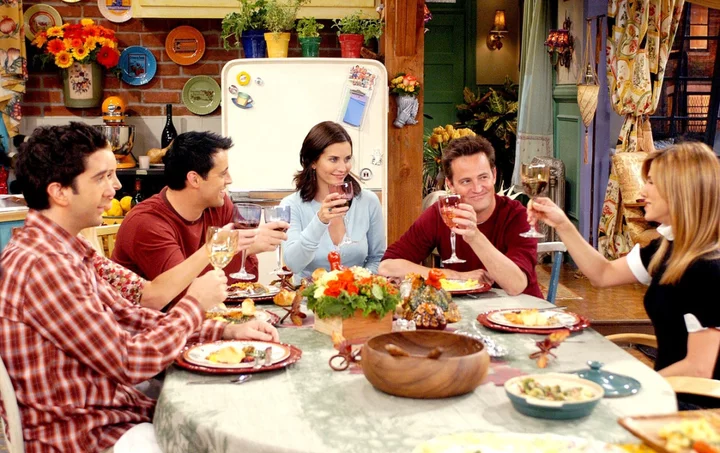
Vegetarian and vegan Thanksgiving recipes: Alternatives to classic holiday dishes
Thanksgiving is a food-focused occasion, with friends and families gathering to gorge on traditional dishes such as roast turkey, stuffing, sweet potato and pumpkin pie. For those who follow vegan or vegetarian diets, it can therefore be quite difficult to navigate the dinner table when the annual harvest holiday comes around. Fortunately, there are numerous vegan and vegetarian alternatives to the traditional animal-based offerings. From lentil loaf to pumpkin pie, here are some of the best vegan and vegetarian recipes for you to try this Thanksgiving: Starters Stuffed mini pumpkins Make the most of the proclivity of pumpkins that have been grown over the autumn with this inventive recipe by Tieghan Gerard, creator of Half Baked Harvest. In her recipe, Gerard stuffs the pumpkins with nutty wild rice and shredded Brussels sprouts, before roasting them in the oven. Gerard recommends baking the pumpkins for around 10 to 20 minutes before serving them hot for all the family to enjoy. Grain-filled soup For a healthy soup with a burst of flavour, try this spicy grain soup recipe by chef Mary Ellen Diaz, from the First Slice soup kitchen. This soup recipe combines ingredients including barley, brown rice, bulgur, garlic, chilies, shiitake mushrooms and black beans for a healthy concoction. Arugula and wild rice salad Kathryne Taylor, creator of popular vegetarian food blog Cookie and Kate, has created a recipe for an arugula and wild rice salad that will provide your Thanksgiving guests with a refreshing and tasty start to their meal. This salad features ingredients including wild rice, almonds, arugula, cranberries, crumbled feta and honey syrup. Mains Butternut squash risotto Butternut squash is a quintessentially autumnal ingredient, perfectly apt for the Thanksgiving table. This Everyday Food recipe shared by Martha Stewart takes 45 minutes to make and combines Arborio rice with garlic cloves, olive oil, fresh thyme, white wine, vegetable broth and butternut squash. Jumbo stuffed pasta shells Angela Liddon, founder of Oh She Glows, specialises in creating inventive and delicious plant-based recipes. This recipe for pasta shells stuffed with an assortment of vegetables and fresh herbs was inspired by Terry Walters, author of the Clean Food cookbook. Liddon uses tofu to create a vegan mixture that tastes like ricotta, which she uses to stuff the pasta shells. Glazed lentil, walnut and apple loaf Another recipe that Liddon has adapted from Walters is the glazed lentil walnut and apple loaf, a dish that will provide Thanksgiving guests with a treat that's both savoury and sweet. Liddon combines ingredients including uncooked green lentils, finely chopped walnuts, garlic cloves, diced sweet onions and raisins among others to create the unconventional loaf. Desserts Vegan pumpkin pie It wouldn't be Thanksgiving without a serving of pumpkin pie. Jessica Hylton-Leckie, founder of vegan food blog Jessica in the Kitchen, has devised a vegan pumpkin pie recipe that's sugar-free, gluten-free and made with all natural ingredients. Cranberry apple crisp Make the most of fresh autumn fruits with this innovative vegan and gluten-free cranberry apple crisp recipe by Jessica in the Kitchen. The dessert dish is best served warm with a dollop of dairy-free ice cream added on top. Vegan pumpkin cheesecake swirl brownies These vegan pumpkin cheesecake swirl brownies look mouth-wateringly good and are likely to delight friends and family galore. Hylton-Leckie uses a combination of vegan cream cheese, pumpkin puree, coconut sugar, pumpkin pie spice, vanilla extract and an egg yolk substitute for the pumpkin cheesecake swirl portion of the recipe. The vegan brownie is made from vegan chocolate chips, oat flour, sea salt, baking soda, flax eggs, coconut sugar, coconut oil, water and vanilla extract. Read More Vegetarian and vegan alternatives to classic Thanksgiving recipes Does turkey really make you tired? Best time to host Thanksgiving dinner Martha Stewart reveals why she ‘cancelled’ Thanksgiving this year Why do Americans celebrate Thanksgiving? Full list of US 2023 federal holiday dates From a race to a movie day, Friendsgiving celebrations that aren’t a sit-down dinner
2023-11-21 01:48

Thailand Economic Growth Slows Last Quarter, Boosts Stimulus Case
Thailand’s economy grew at a slower pace in the third quarter, supporting the case for the new government
2023-11-20 10:55
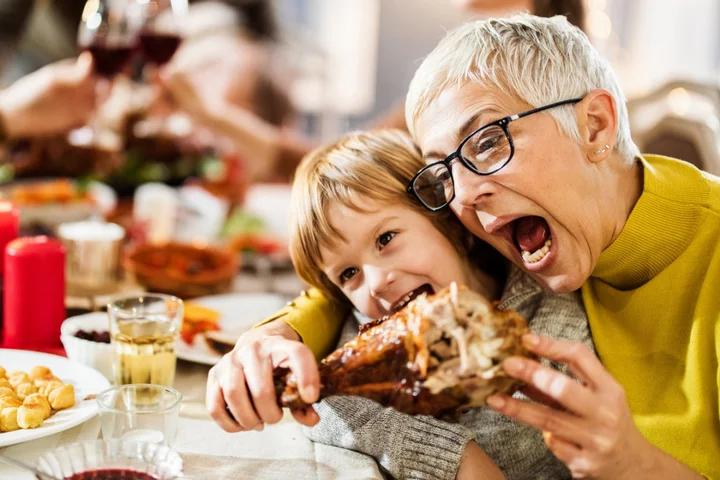
Does turkey really make you tired? Chefs share the best time to host Thanksgiving dinner
Thanksgiving is only days away, and families all across America are in the midst of building their dinner menus for the feast. While you’re heading to the grocery store to pick up your turkey and sweet potatoes, there’s one aspect of Thanksgiving that’s important to consider while planning out the big day: When will dinner be served? Over the years, Americans have opted to host their dinners at different times, with many families starting the meal at 3pm on the fourth Thursday in November. On the other hand, some people decide to eat dinner as they normally would, by hosting Thanksgiving at 6pm or 7pm. The question of when to have your Thanksgiving dinner may be tied to one major factor - that large meals can make you a bit sleepy. There’s constant discussion surrounding the star of Thanksgiving, turkey, and how it makes you tired. Turkey contains tryptophan, an amino acid in our bodies that helps make melatonin to regulate sleep schedules, according to the Icahn School of Medicine at Mount Sinai. There’s no arguing that eating a Thanksgiving meal full of turkey, stuffing, and mashed potatoes would make anyone ready for a nap. Still, the question remains as to whether the chemicals in turkey actually make us susceptible to tiredness, or whether other factors are at play in our post-meal slumber. Speaking to The Independent, professional chefs have discussed the drowsiness that comes from eating a hefty meal, and how that feeling can affect your upcoming Thanksgiving plans. According to the Cleveland Clinic, tryptophan is an essential acid that’s found in food containing high levels of protein, such as chicken, eggs, cheese, and fish. Since there’s tryptophan in turkey, the amino acid can affect our body’s levels of both melatonin and serotonin, neurotransmitters that control our moods. Speaking to The Independent, California-based chef Brendan Collins acknowledged that the tryptophan in turkey is an amino acid that affects our sleep schedule. However, he clarified that turkey isn’t the reason for the drowsiness, and rather our eating habits on Thanksgiving could be the culprit. “I think the truth is that we can end up overeating on Thanksgiving, in comparison to our normal eating schedule, and we get food comas,” he explained. “We need to sleep because of that. Not because of the small amount of tryptophan found in the turkey itself.” John Carpenter - an executive chef at Signature Restaurant at La Cantera Resort and Spa in Texas - agreed that stuffing our faces with food on Thanksgiving may be more likely to blame for our tiredness. He noted that it’s easy to feel sleepy after a big meal and specified that a range of foods and beverages can contribute to the drowsiness, from pumpkin pie to wine. “Thanksgiving dinner is quite heavy, between stuffing and large amounts of meat we eat, whether that be turkey or ham,” he explained. “It’s also usually surrounded by friends and family, and there’s some alcohol drinking usually involved, which isn’t exactly known to keep us awake.” With the side effects of eating a big Thanksgiving meal in mind, chefs have shared their advice on when to plan your dinner. It’s important to note that the day before Thanksgiving can be relatively busy, from buying your ingredients to decorating your home. In addition to managing physical tasks, Carpenter said there’s another routine he usually takes on to prepare for the holiday - changing up his eating habits. “For me personally, I definitely prefer to change my eating schedule, leading up not only the day of Thanksgiving, but also a couple of days before,” he said. “I always eat a little bit lighter, leading up in anticipation of a big meal. And personally, I normally don’t even eat breakfast on Thanksgiving because I know I’m going to eat so much.” The morning of Thanksgiving tends to be quite hectic, so Collins urged families to give themselves enough preparation time before dinner. He recommended giving yourself a good two and a half to three hours of cooking time, when you can prepare all your vegetables while the turkey is in the oven. So, when is the best opportunity to serve the food to your guests? Professional chefs recommend the daytime, rather than evening, as the best time to host your dinner, taking both meal preparation time and drowsiness into account. “Normally for me, it’s early in the afternoon or early in the day,” Carpenter explained. “I have two children so I prefer earlier because it gives us the rest of the day for them to wind down from a big meal and all that. And then you have more time during Thanksgiving day to be with your family.” When you decide to host your Thanksgiving dinner is entirely up to you, but Collins acknowledged that the age of your guests is another factor to consider. He noted that children are generally accustomed to having their meals earlier in the day, even though that might not be the case for adults. “I think if there’s a lot of children under 10 years of age, having your dinner at 2pm or 3pm would be good,” Collins said. “If it’s more towards the adult scene, then I think it’s more of an early dinner, late lunch kind of thing. I’d personally go for 4pm or 5pm.” Thanksgiving aside, studies have found that late-night dinners may not be the best idea. In a 2022 study published in peer-reviewed journal Cell Metabolism, researchers examined 16 patients who were overweight and obese as they ate the same exact meals on two schedules - one group eating as late as 9pm. Results showed that eating later had a large effect on how patients regulated their “energy intake, expenditure, and storage”. Since there’s so many different types of food served on Thanksgiving, eating dinner on the earlier side could ultimately be better for your physical health. “Personally, I know you shouldn’t be eating a huge meal later at night, especially the size of a normal Thanksgiving meal,” Collins added. “So definitely give yourself the time for your food to settle down.” Although there are various factors to consider when planning the timing of your Thanksgiving dinner, it’s important to remember not to let the stress of it ruin the day. “Don’t stress out too much about the food,” Collins said. “I know sometimes Thanksgiving is one of the first times you’ve seen friends or family in a long time. So I think the idea is that it’s celebratory, and make sure you do that. Buy really good wine or champagne and enjoy yourself.” Read More 10 Thanksgiving traditions and where they come from Two dishwashers? To be truly middle class you need two kitchens... How ‘dine and dash’ became the new shoplifting – and why we’re all paying the price Two dishwashers? To be truly middle class you need two kitchens... How ‘dine and dash’ became the new shoplifting – and why we’re all paying the price The French have rules, and they have camembert rules – mess with them at your peril
2023-11-20 03:23
